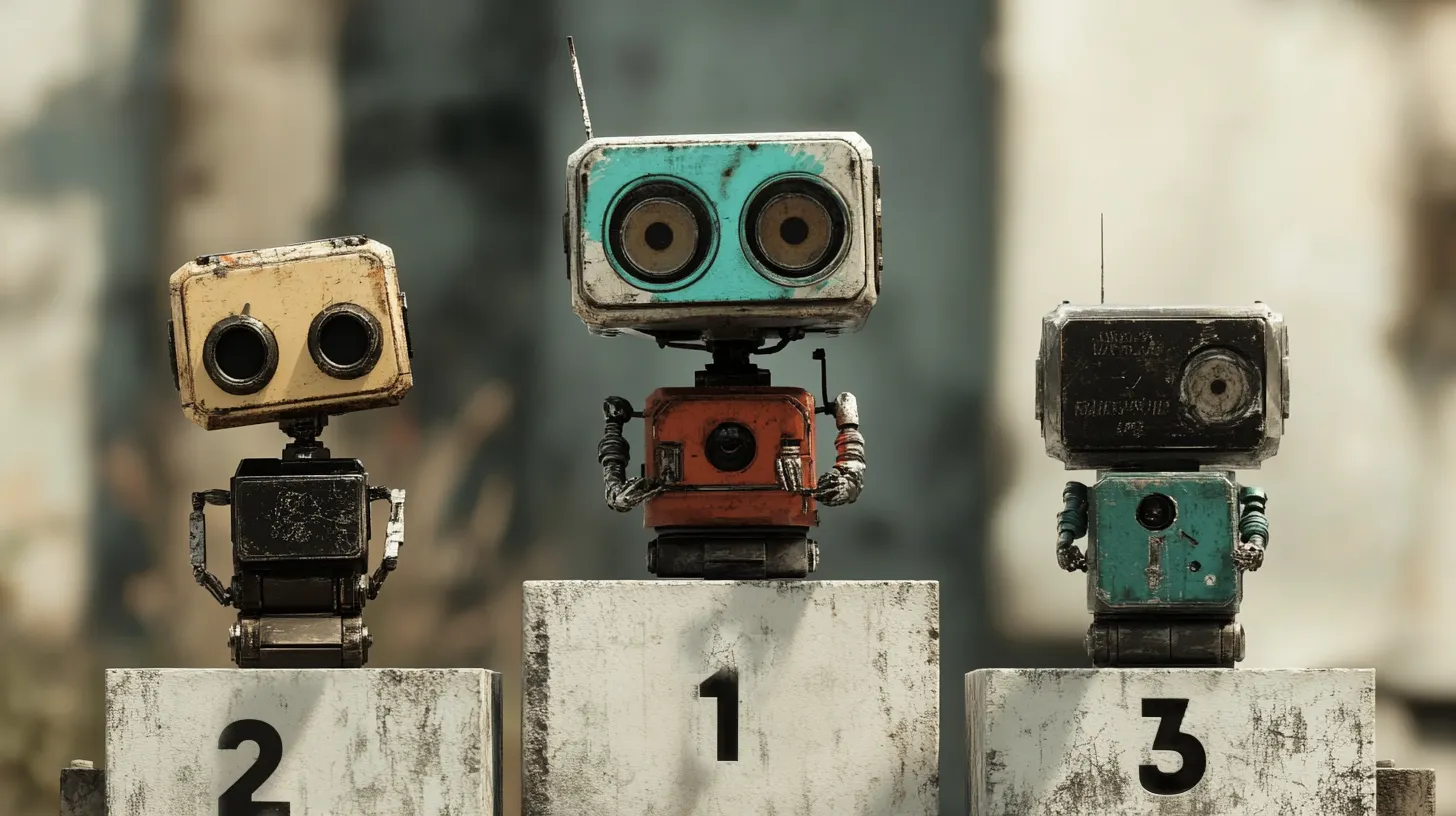The generative AI landscape has morphed into a high-stakes battleground in 2024, with an army of upstarts storming the castle once ruled by OpenAI.
Everyone and their tech-savvy grandma seems to be vying for a piece of the AI pie, cooking up language models, agentic AIs, image generators, and even an AI meme coin shiller or two.
The benchmarks are changing faster than our human ability to keep up. Barely a week goes by without some shiny new toy hitting the market—an updated LLM here, a turbocharged image generator there, or a next-gen AI flexing some exotic training technique.
But here at Decrypt, we've rolled up our sleeves and tried them all.
We've kicked the tires, pushed the buttons, and gotten deep inside the inner workings and the outputs provided by the most popular AI models—and some that are not so well-known.
Now that it's clear that OpenAI isn't the only sheriff in town, we've compiled a list of the cream of the crop—the generative AI models that have wowed us, befuddled us, and occasionally made us spit out our coffee.
Chatbots
A chatbot is a computer program designed to simulate conversation with human users. It uses natural language processing and artificial intelligence to understand user inputs and generate appropriate responses. Usually, people confuse chatbots with LLMs, or large language models.
Today, chatbots are a bit more complex, with capabilities that extend beyond text generation. They can now browse the web, generate and understand images, talk to the user, etc.
Here is our list of the best chatbots you should try:
Gold medal: OpenAI's ChatGPT
ChatGPT offers a wide array of features at $20/month, including custom agent creation with natural language, a clean interface, web search, and multiple models (reasoning, writing, vision, voice, and image generation).
Silver medal: Anthropic's Claude
A superior LLM with an intuitive UI featuring split-screen artifacts for reasoning and code generation, Claude supports million-token context and custom agents. However, it lacks web search and image generation and often faces capacity issues, forcing users to switch to a weaker model or generate “concise” shorter answers. Because of this, it cannot be the best just yet.
Bronze medal: Mistral AI’s LeChat
This free platform is powered by Mistral Large, featuring top-tier Flux image generation and superior web search—the best, in our opinion, even beating SearchGPT. It supports document/image understanding and open-source AI agents, though text quality trails competitors. However, the Mistral Large LLM isn’t as strong as its competitors, making it ideal for power users willing to trade text quality for features.
Honorable Mentions: Meta AI, Gemini (from Google’s AI studio, not the main site), Hugging Chat, Reka, Grok-2
Large language models
A large language model or LLM is an artificial intelligence system trained on vast amounts of text data to understand and generate human-like language. You can see it as a glorified autocomplete. They are designed to predict what the most likely token (think about words, though it’s an inaccurate comparison) is in a group.
The result is natural text that feels human because, well, it resembles what humans would do.
Here is our list of the best LLMs to date:
Best generalist: OpenAI's GPT-4o
Balances creative writing, coding, and reasoning with a customizable "Canvas" feature, though its style can feel predictable. The latest version (from November 20) has also achieved the top spot in the LLM Arena with an ELO score of 1,366, beating an experimental version of Google Gemini released on November 21.
Best for writing: Anthropic's Claude 3.5 Sonnet
Matches or exceeds GPT-4o in many areas with more creative, human-like output, though it's prone to hallucination.
Best for storytelling: Longwriter
Generates 10,000+ word stories within minutes. Do we need to say more?
Most versatile: Meta's Llama-3.1
The leading open-source model with extensive customization, LoRA creation, and fine-tuning options, available in sizes from 7 billion to 405 billion parameters so users can run it on their local machines or cloud servers depending on their needs. Nvidia developed a customized version named "Nemotron," which made some waves in the community and is worth checking out.
Biggest letdown: Reflection Llama-3.1 70B
Announced with high expectations, the model claimed to beat GPT-4o thanks to its embedded Chain of Thought. It ended up being a major fiasco with fake benchmarks, hidden API calls to Claude AI, and a major controversy.
Image generators
An image generator is essentially a model that gets a text input and provides an output associated with that text input. So, for example, you say, “Green horse with a dragon face,” and the model will generate a photo of a green horse with a dragon face. You can also input something like “busty waifu,” but that is not what they are for.
These are some of the best image generators currently available
Best generalist: Flux
Flux dominates the latest generation of AI models with substantial customization, LoRA/ControlNet support, and text generation capabilities. It requires powerful hardware, but shows a characteristic style with extreme bokeh and slack skin detail that users are still trying to tackle.
It comes in three flavors: Pro (closed-source, the most potent model), Dev (noncommercial license), and Schnell (an open-source, distilled version). All three offer excellent image generation capabilities, and the ceiling will go higher if fine-tunes are considered.
Best for realism: Recraft v3
Delivers unmatched realism, offering versatile presets and better value than proprietary alternatives like MidJourney.
It has a free tier that offers the same quality—though Recraft owns generations.
Best for anime: MidJourney Niji
Unrivaled quality for anime-style images; a Stable Diffusion fine-tuning is a secondary option.
Most versatile: Stable Diffusion 3.5
Stable Diffusion 3.5 is a major improvement over SD3 with better licensing, detailed output, and add-on support.
It is more resource-efficient than Flux for fine-tuning and is a full model—unlike Flux Schnell, which is a distilled version—making it the best pick for custom models.
However, it came out a little bit late and has been overshadowed by Flux’s popularity.
Biggest Letdown: SD 3 Medium
Everyone expected this new model to be the new King of Image Generators, beating SDXL and every other model. It ended up being a poor model, infamous for its horrible license and horrific aberrations when trying to generate people on grass.
Video generators
Video generators take image generation one step further. They generate each frame and use it as input to generate the following one with image consistency and high prompt adherence.
This is still a work in progress, and models can only generate a few seconds of video. Below is a list of some of the best ones you can try.
Best generalist: Kling
Rapidly improving the Chinese model, outperforming Sora in some cases. Supports face model training, and consistently generates high-quality scenes showing a major versatility in terms of styles, realism, and camera movement.
Best contender: Runway Gen 3
Pioneering generative video app with solid environmental understanding, but struggles with fast-paced scenes.
Best for storytelling: ShowRunner
We cannot tell you a lot about this one. However, in confidential testing, it has shown immense potential.
Best open-source: Genmo Mochi 1
It's a great release that beats competitors like Rhymes Allegro and Stable Video Diffusion with superior realism and frame consistency.
Biggest letdown: OpenAI Sora
Announced with high expectations as a revolutionary “world model” beyond any video generation, it remains unavailable today with underwhelming leaked outputs.
Honorable mention: Google Veo
Google's Veo was released on December 3. We haven't tested it, but the generations shared by Google look pretty nice. Of course, we're on the waiting list to test the model, and you'll be the first to know our thoughts as soon as we get access.
Music generators
Just like video generators, music generators create songs. It’s different from audio generators, however, since the outputs are more specialized to melodic outputs that are not noise, plain voices, or audio effects.
Users can rely on a separate LLM to generate the lyrics of a song or input lyrics manually, and set a few parameters like the style of the song, and then the model will output relevant music from scratch.
These are the best two—plus an open-source alternative.
Best generalist: Suno v4
Excels in vocals and lyrics, style diversity, and long-form consistency. Its predecessor, Suno v3.5, is not free but remains a strong alternative.
Best contender: Udio
Suno’s biggest rival. It delivers impressive composition accuracy, nearly rivaling Suno v4 in vocals. Some generations surpass Suno v3 in subjective style.
Best open-source: Stable Audio 2
The open-source scene is not doing a lot in this area. Stable Audio 2 seems to be the best model, but lags behind closed-source competitors in every field. Meta’s AudioCraft and MusicGen are alternatives, but far from industry-leading. Fine-tuners have not paid attention, and usually, they are the people behind the cherry on top that makes open-source models so great.
Edited by Andrew Hayward

